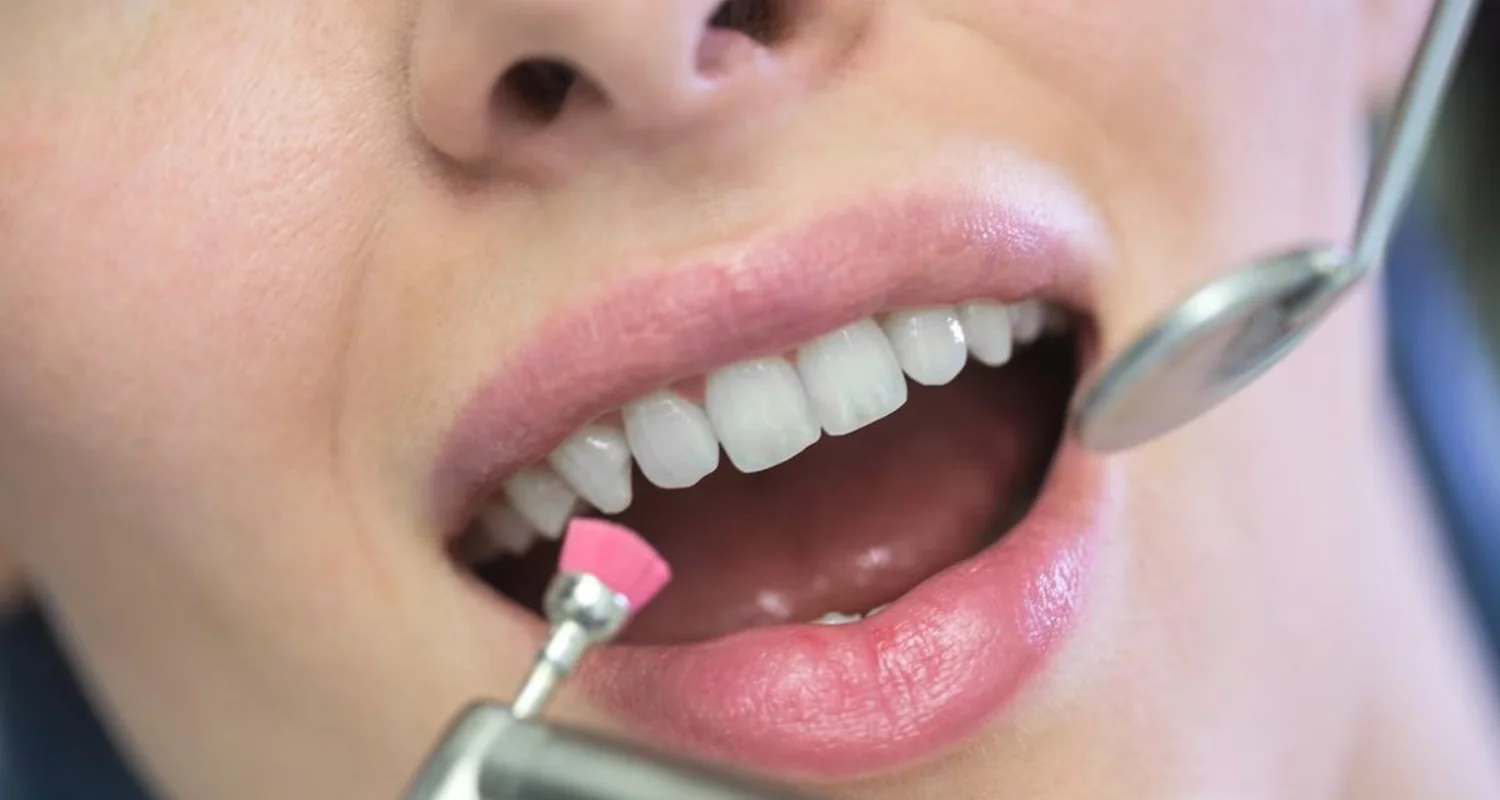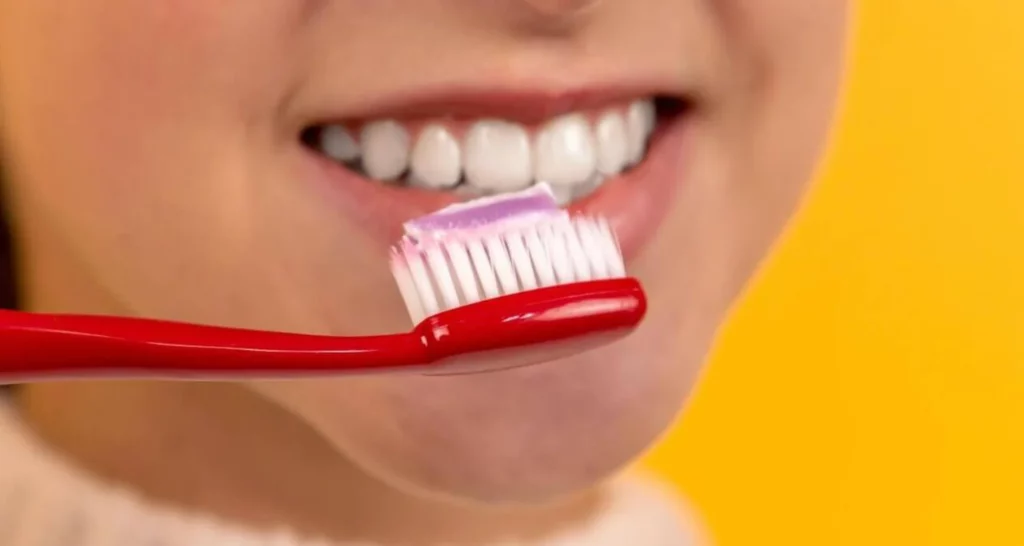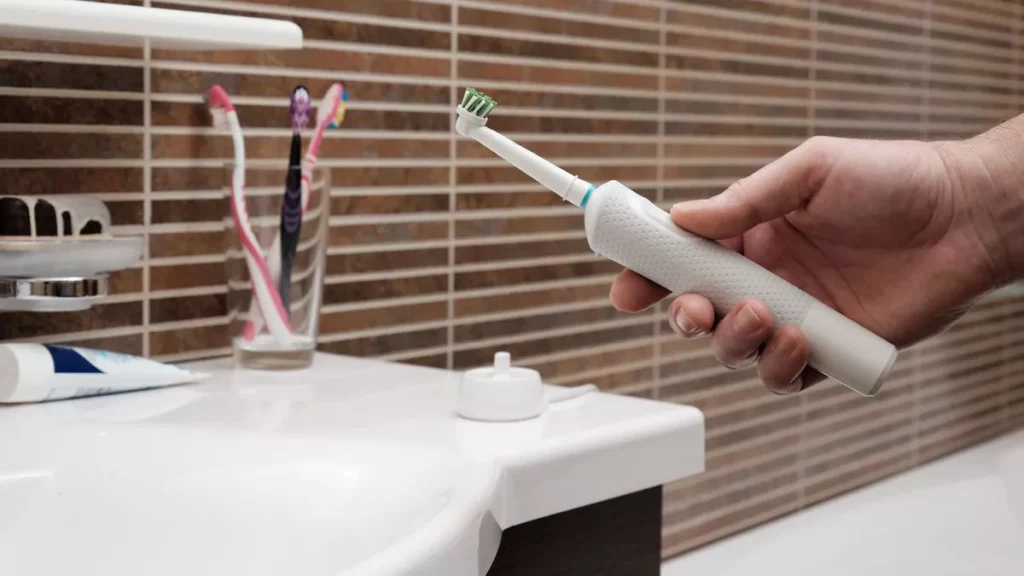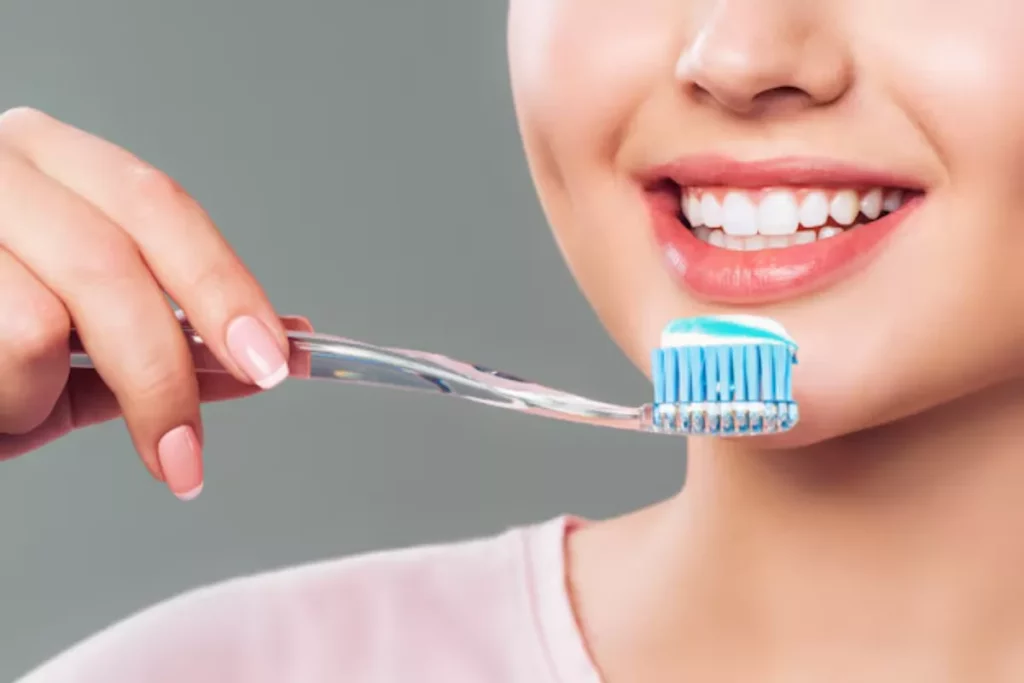Last Updated on: 15th December 2025, 05:57 am
Choosing the right ingredients to maintain a healthy, problem-free smile is extremely important. However, most people are unaware of the products they use and don’t fully understand how they work.
Toothpaste is a staple in our daily oral care routines, essential for keeping the teeth and gums clean and healthy. It’s more than just a paste, however; various ingredients tackle different issues like dental decay, plaque, bad breath, etc. Some types contain specific ingredients designed to address dental problems, such as fluoride and triclosan.
There are plenty of other ingredients that you may or may not be familiar with, but the most talked-about one right now is hydroxyapatite. Keep reading to discover what it is, the benefits for teeth, how it works, and why you should make it a part of your daily oral care routine.
What is hydroxyapatite?
Hydroxyapatite is another form of naturally-occurring calcium that makes up 97% of the tooth enamel and about 70% of its dentin component. The rest of the tooth is composed of water, collagen, proteins, and minerals. Its chemical formula is Ca10(PO4)6(OH)2. It is a major component of human bones, making up about 60% of their crystalline structure.
Did you know? Tooth enamel is known to have the highest hydroxyapatite content, making it stronger than other components such as dentin and the strongest calcium mineral present in our body.
Benefits of hydroxyapatite for teeth
Human teeth undergo a constant process of demineralization and remineralization. To help make them stronger, it is essential to use products that contain ingredients such as hydroxyapatite that contribute to restoring their calcium content. Hydroxyapatite offers many oral health benefits such as:
1. Caries prevention and healing: When it comes to remineralizing teeth, HAP toothpaste works just as well, or even better, than fluoride toothpaste.
Research indicates that HAP can lessen carious lesions and enhance enamel remineralization, resulting in a stronger outer covering than fluoride toothpaste. It successfully prevents and reverses minor enamel erosion and tooth decay.
2. Non-toxic and biocompatible: Unlike high fluoride dosages, which are neurotoxic, HAp is harmless and completely accepted by the body. It is biomimetic, as mentioned, meaning that it mimics the components of teeth naturally without an adverse effect. Even synthetically derived nano-HAP is secure and non-toxic.
3. Whitens the teeth: By restoring healthy tooth structure and contributing to the calcium content, HAP can help lighten and whiten teeth, without the need for any extra ingredients.
4. Oral microbiome-friendly: HAP shields the teeth from acid erosion without endangering the oral microbiome’s beneficial bacteria. It preserves dental health by preventing microorganisms from adhering to the tooth’s enamel without entirely eradicating them, in contrast to conventional fluoride toothpaste.
5. Provides resistance to acidic pH: It shields the enamel against acidic degradation by assisting in the maintenance of a slightly alkaline pH in the mouth.
6. Enhances gum health: HAP toothpaste can aid people with gum disease by lowering plaque buildup, healing bleeding gums, and eradicating periodontal pockets.
7. Reduces tooth sensitivity: Due to its remineralization potential, hydroxyapatite restores the outer layer of the teeth and helps reduce sensitivity.
Sources of hydroxyapatite
Hydroxyapatite, also known as hydroxylapatite (HA), is commonly extracted and synthesized from natural sources such as bovine bone, fish bone, clam shells, and fruit peels. Comestibles, on the other hand, do not contain hydroxyapatite, as hydroxyapatite is a naturally-occurring mineral form of calcium apatite primarily found in bones and teeth.
However, they can be rich in nutrients that support the formation and maintenance of hydroxyapatite in the body. Vitamin C-rich sources like oranges and kiwis, along with calcium-rich sources such as papayas, kale, broccoli, and spinach, can effectively contribute to the synthesis of this mineral in our bodies and contribute to healthy teeth and gums.
Commercially available hydroxyapatite supplements are yet another source, but they should only be consumed under the guidance of a healthcare professional.
Types of hydroxyapatite
Hydroxyapatite (HAP) is available in two forms: micro HAP and nano HAP. Apart from particle size, the primary distinction is that nano-HAP is often derived from synthetic sources, whereas micro-HAP is usually extracted from natural sources. Both types are extremely powerful at remineralizing teeth.
Of note, for people with sensitive teeth, nano-HAP toothpaste is a preferable option. This is because it can provide better protection by covering a larger surface area with smaller nanoparticles. Nevertheless, micro-HAP toothpaste still functions well for sensitivity if nano-HAP toothpaste is not available.
How does hydroxyapatite toothpaste work?
Remineralizing your tooth enamel is the primary function of hydroxyapatite toothpaste, which also helps shield the teeth from dental decay. The HAP particles attach themselves to the teeth to fill in the tiny enamel fissures that are susceptible to tooth decay and help repair damaged areas.
The biomimetic nature of HAP is what makes it so special. Put another way, it is composed of biological substances that can replicate the biochemical processes that are naturally occurring in the body.
Thus, as soon as hydroxyapatite is applied to the tooth’s surface, it naturally goes right to work and aids in maintaining its structural integrity.
Fluoride vs hydroxyapatite toothpaste
When comparing hydroxyapatite (whether in nano or micron particles) to fluoride, hydroxyapatite consistently performs equally well or better. The two substances work differently to enhance dental health. Fluoride does not directly replace the minerals in your teeth. Instead, it forms a new structure called fluorapatite.
Additionally, fluoride signals your enamel, via your saliva, to more efficiently absorb calcium and phosphate, thereby strengthening the tooth structure. Both fluoride and hydroxyapatite slow or limit the production of pathogenic bacteria in the mouth. Hydroxyapatite directly replaces the structure lost from your teeth during demineralization, which happens constantly, especially when consuming sugary, acidic, or carbohydrate-heavy foods.
To expand on its operation, it fills the microscopic fissures on your enamel caused by brushing and normal wear and tear. When you brush, hydroxyapatite binds with plaque or bacteria, allowing you to spit them out rather than leaving them on your teeth. Unlike fluoride, which forms an external protective layer, hydroxyapatite penetrates the entire tooth, rebuilding it from the inside out.
This makes it particularly effective for cavities, as it can reach the bottom of carious lesions where fluoride cannot. Furthermore, hydroxyapatite results in smoother, whiter teeth as compared to fluoride because it fills fissures and strengthens the internal tooth structure by increasing their microhardness.
For individuals at higher risk for fluoride toxicity, such as pregnant women, children, and those commercially exposed to fluoride, switching to hydroxyapatite toothpaste is advisable, even if they are currently using fluoride toothpaste to prevent the associated risks, such as fluorosis.
To summarize, the varied benefits of hydroxyapatite for teeth provide an all-in-one solution that addresses a vast array of dental problems. When compared to fluoride-based toothpastes, it is considered to be a relatively safer and more reliable alternative. Incorporating this toothpaste into your oral healthcare routine, alongside proper brushing and flossing, is an excellent way to ensure good oral health.
Frequently Asked Questions
Does hydroxyapatite work for tooth remineralization?
Yes, hydroxyapatite effectively helps comb at tooth remineralization by replenishing lost minerals and strengthening enamel. It fills microscopic gaps, reduces sensitivity, and integrates seamlessly with natural tooth material, enhancing the natural remineralization process.
Do hydroxyapatite toothpastes regenerate worn enamel?
Hydroxyapatite toothpastes aid in the repair of worn-out enamel by rebuilding and strengthening it. They fill in tiny cracks and defects, creating a protective layer that mimics natural enamel and helps prevent further erosion, although they may not fully restore severely damaged enamel.
Is there a way to bind hydroxyapatite to the surface of teeth?
Yes, hydroxyapatite can bind to the surface of teeth through dental products like toothpastes and mouth rinses. These products create a protective and restorative layer on the enamel. Professional treatments with concentrated hydroxyapatite provide significant protection and remineralization benefits.
What is hydroxyapatite used For?
Hydroxyapatite is used in dentistry for tooth remineralization, dental implants, and bone grafts. It is also used in orthopedics for bone repair and in cosmetics for gentle exfoliation. Its biocompatibility and ability to promote bone and enamel regeneration make it valuable in the medical and dental fields.
Share
References
1. O’Hagan-Wong, K., Enax, J., Meyer, F., & Ganss, B. (2022). The use of hydroxyapatite toothpaste to prevent dental caries. Odontology, 110(2), 223–230. https://doi.org/10.1007/s10266-021-00675-4
2. Chen, L., Al-Bayatee, S., Khurshid, Z., Shavandi, A., Brunton, P., & Ratnayake, J. (2021). Hydroxyapatite in Oral Care Products-A Review. Materials (Basel, Switzerland), 14(17), 4865. https://doi.org/10.3390/ma14174865
3. Pawinska, M., Paszynska, E., Limeback, H., Amaechi, B.T., Fabritius, H.O., Ganss, B., O’Hagan-Wong, K., Wiesche, E.S., Meyer, F., & Enax, J. (2023). Hydroxyapatite as an active ingredient in oral care: an international symposium report. Bioinspired, Biomimetic and Nanobiomaterials. https://www.researchgate.net/publication/376279882_Hydroxyapatite_as_an_active_ingredient_in_oral_care_an_international_symposium_report
4. Guntermann, L., Rohrbach, A., Schäfer, E., & Dammaschke, T. (2022). Remineralization and protection from demineralization: effects of a hydroxyapatite-containing, a fluoride-containing and a fluoride- and hydroxyapatite-free toothpaste on human enamel in vitro. Head & face medicine, 18(1), 26. https://doi.org/10.1186/s13005-022-00330-5
5. Jeniffer Larson. (April, 2021). What Is Hydroxyapatite Toothpaste? https://www.healthline.com/health/dental-and-oral-health/hydroxyapatite-toothpaste
-
Nayibe Cubillos M. [Author]
Pharmaceutical Chemestry |Pharmaceutical Process Management | Pharmaceutical Care | Pharmaceutical Services Audit | Pharmaceutical Services Process Consulting | Content Project Manager | SEO Knowledge | Content Writer | Leadership | Scrum Master
View all posts
A healthcare writer with a solid background in pharmaceutical chemistry and a thorough understanding of Colombian regulatory processes and comprehensive sector management, she has significant experience coordinating and leading multidisciplina...


















